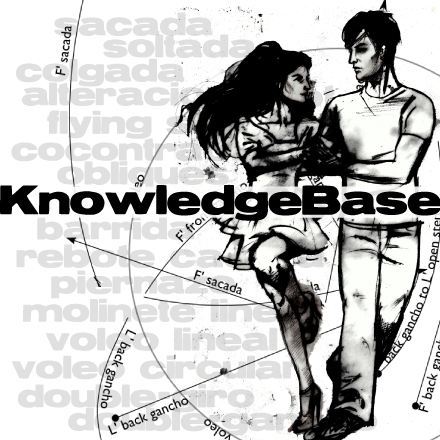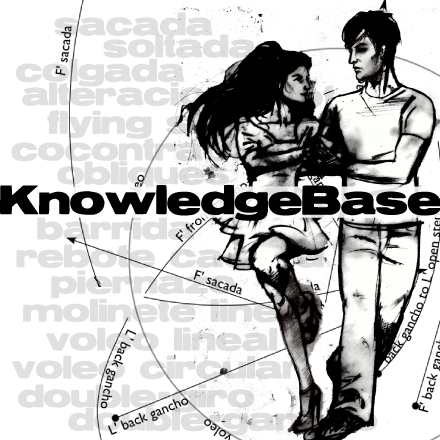The common term “axis” is the beginning of the problem with common technique. ‘Axis’ is about creating your balance alone, without connection and without interference of external forces. We use instead a concept designed for partner dance, shared balance, communication, and absorbing changing force between the partners: The Arch of Connection. For the arch, you don’t need an axis, you need an arc.
Each partner builds an arc
To position the skeletal architecture of your base leg’s arc, place the front of its rib cage atop the knuckle of its big toe, then flex its hip joint by pulling your tailbone directly backward about 2cm. The result will be that your base leg is in external rotation relative to your torso, and your torso is slightly canted. Your hip bones should NEVER move forward of the front of your rib cage. And your hip should not drop to the side.
Connecting two arcs
The two arcs make an arch, which enables them to created shared balance, precise communication, and sublime connection.

We adjust our position and muscle action constantly to maintain the arc, during the beginning of the step (intention/projection), the middle of the step (transfer), the end of the step, and when making special effects. The angle of the arch may be increased and muscle contraction intensified for dramatic and powerful movements.

The partners arrive into the arch at the end of each step. At the beginning of each step, they increase muscle power in the arch during the moment of intention/projection.
During projection toward or away from the Mark, the tension of the whole arch momentarily shifts shifts from push (intention away from the Mark) to pull (intention toward the Mark).


The Mark’s communicates the next direction/projection without moving the arch. This is the moment of intention/projection toward, away, or lateral to him.
When he’s ready to transfer her weight, he points his arc to the ribcage of her new base leg and she moves her arc to complete the arch. She puts her foot where it needs to be to support the arch, so as not to break the connection. And she powers her muscles so the arch feels great.
Stabilizing and powering the arch
Next, contract a few key muscles to stabilize your arc and trigger a chain of muscles which can be intensified as force between the partners increases.
- hip stabilizer: piriformis
- shoulder stabilizers: rotator cuff
- elbow stabilizers: triceps
- spine stabilizer: transverse abdominus (you can also use gluteus maximus or quadriceps+hamstrings. do not use your lower abdominals or rectus abdominus)
Visit the Exercise Center for exercises to develop awareness and control over each of the muscles in the stabilization chain.











